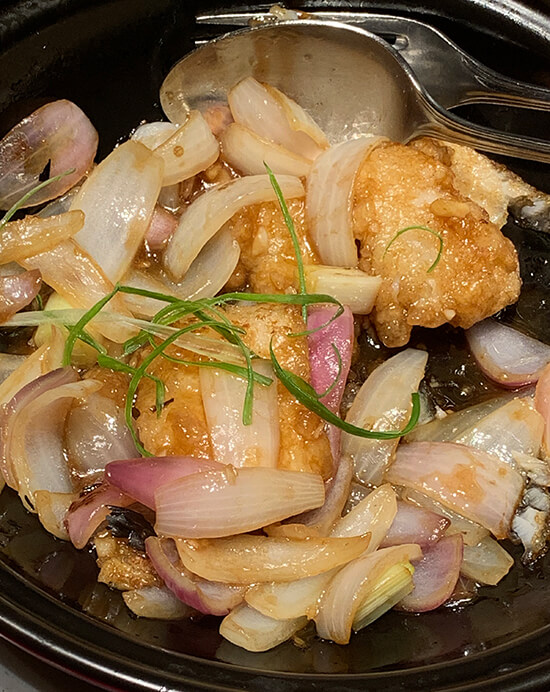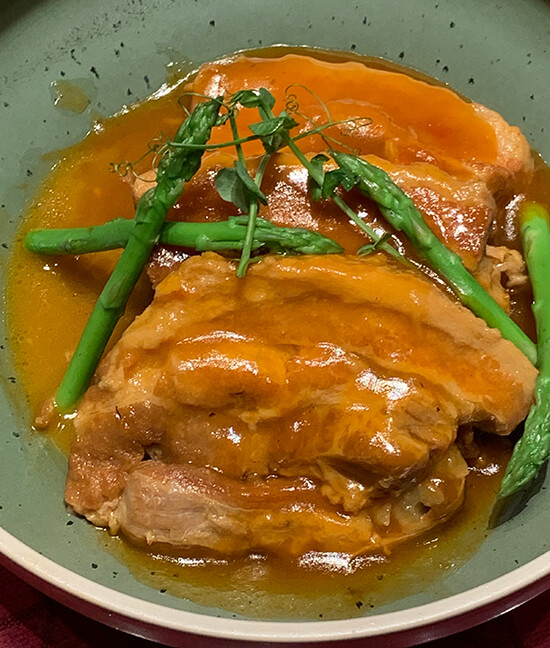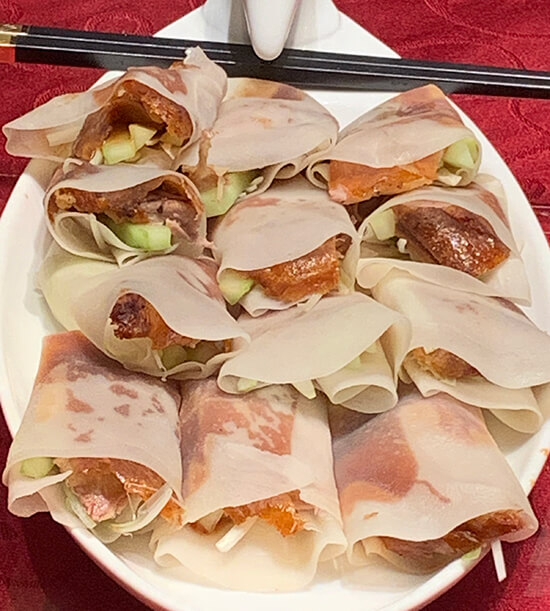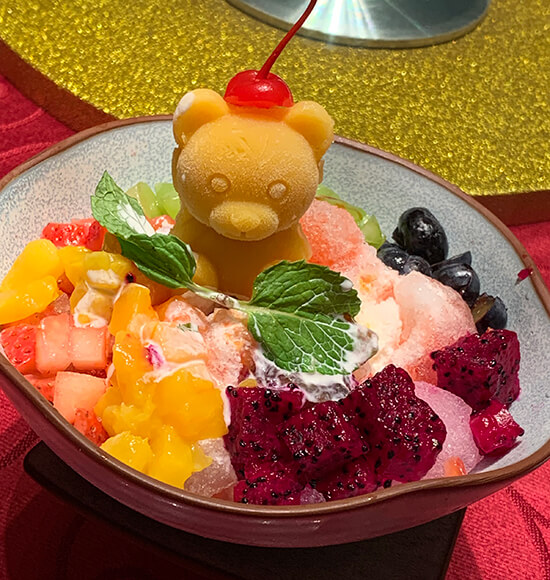When west meets east in Chinese dishes
At lunch recently in Makati Shangri-La’s Shang Palace, I was tempted to fill up on the seafood fried rice. A far cry from the Chinese fried rice haphazardly prepared from leftovers, this dish was so tasty I felt I could just ignore the other dishes. The rice was lavish, every grain brimming with flavor, as if it had been simmered in a rich stock, the way one would cook a Spanish paella. Morsels of seafood and minced vegetables added to the texture and richness. If I could have just one dish that day, I thought this would be it.
But there was no chance of having only one dish, because we were at Shang Palace to try some of the new dishes executive Chinese chef Chan Po Sang recently added to the menu.

Among them: braised fish maw soup with crab meat. Made with the fried stomach of deep sea fish, the soup was smooth and velvety. Every spoonful yielded strips of fish that had the gelatinous texture of beef tendon, and is likewise packed with beauty-inducing collagen. Meanwhile, there were chunks of crab meat to further delight the palate.
Another seafood dish new on the menu was the silver cod. Cooked with caramelized onions and braised in yellow bean paste, the fillets of fish were delicate and flavorful.

Our next dish was a fine example of West Meets East, West here meaning Iberico pork imported from Spain, and East being the Chinese method of cooking. This breed of pork is Spain’s pride and joy, coming as it does from the heritage black-footed pigs roaming in the verdant meadows of the Iberian Peninsula and feeding only on acorns and herbs. This yields tender, well-marbled pork that could well be the equivalent of Wagyu or Kobe beef.

Shang Palace’s answer to this is to marinate the Iberico pork ribs for 24 hours, after which it is slowly, patiently baked for one hour. It is then cooked in a savory thick sauce that’s just on the verge of sweetness. Falling off the bone tender, it reminded me of pata tim. Though we had it with rice, I thought it would be more interesting to serve this with steamed mantou buns. The soft doughy buns would be the perfect complement to the intense flavor of the pork.

Quite a curiosity was the spicy stewed US beef. The thinly sliced beef was tenderness perfection, but I think the real point of the dish was the harmonious blend of the sour and the spicy. This dish is popular in Northern China where the weather is cold about seven months of the year, said Annie Ick-Gatchalian, director of marketing communications. Because no fresh vegetables grow during that time, they use preserved vegetables. The preservation process anoints the vegetables, particularly the cabbage, with a mellow, sour flavor. Combined with a spicy broth, it teases the taste buds with alternating wisps of one then the other, making it strangely rewarding, especially on cold wintry nights.

Of course, we had the Peking duck, too. No matter how often I’ve had this roast, I still perk up at the sight of its golden brown mahogany skin, at the anticipation of relishing the crisp skin intertwined with slightly fatty meat, and biting into the crunchy strips of scallions and crisp cucumbers, all brushed with sweet, piquant hoisin sauce, and wrapped in whispery thin Mandarin pancakes. At Shang Palace the Peking duck was every bit as good as its look promised. Moreover, the menu offers a choice of ordering only half of the Peking duck, which is a good option for small groups of four or five.

After every Chinese meal, my companions and I would usually groan with contentment, swearing we couldn’t eat another bite. But after every Chinese meal, we still end up ordering dessert. This lunch was no exception. And it was a good thing too, because the desserts Annie ordered were delightful. In keeping with the Mooncake Festival, we had a plateful of assorted mooncakes. Then there was the Chinois rendition of halo halo: diced seasonal fruits in finely crushed ice, in the midst of which sat a tiny frosted teddy bear with a cherry on top. The jasmine tea panna cotta with bits of mandarin orange and calamansi sauce was refreshing and citrusy. The almond tart, generously studded with slivered almonds, lived up to its nutty name. To make it more indulgent, on the side were a scoop of coconut sorbet and a sesame nougatine. And so, despite our initial protestations, we readily forgot about being too full and gobbled up these tantalizing sweets to the last delicious bite.


